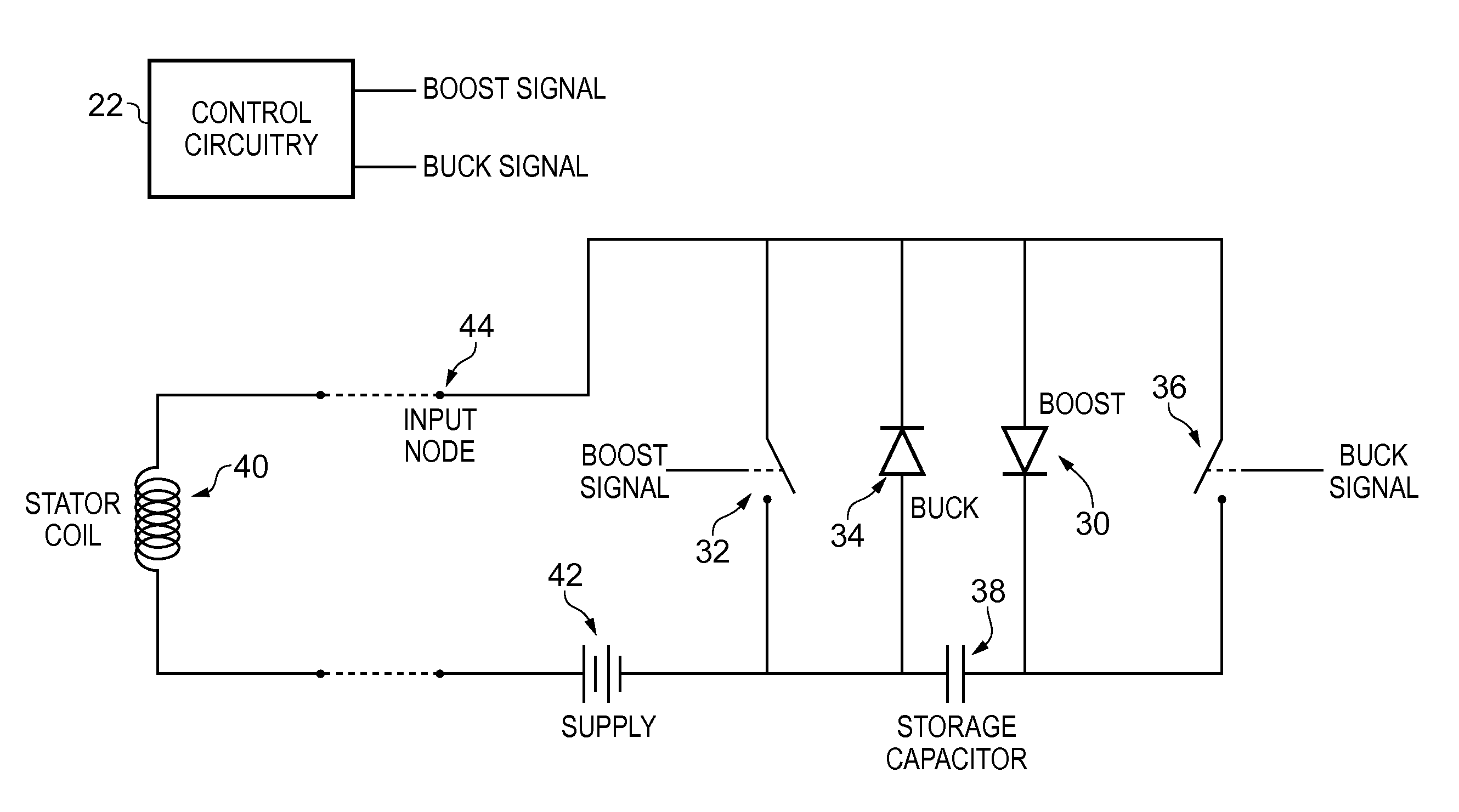Electrical motor system and method of operating the electrical motor system
- Summary
- Abstract
- Description
- Claims
- Application Information
AI Technical Summary
Benefits of technology
Problems solved by technology
Method used
Image
Examples
Embodiment Construction
[0048]FIG. 1 schematically illustrates a switched reluctance electrical motor system 10 in one embodiment. The electrical motor comprises a rotor section 12 configured to rotate within two stator sections 14 and 16. The rotor section is configured to have sixteen rotor teeth, which form longitudinal spines extending radially outward and running along the length of the rotor section through both stator sections 14 and 16. Each stator section is configured to have twenty four stator teeth, which form longitudinal spines extending inwardly and also running along the length of each stator section. Each stator tooth is wound with a coil comprising a high number of turns—in this instance there being approximately two hundred. In the embodiment illustrated in FIG. 1 there are no coils on the rotor teeth, as the magnetic fields generated by powering the stator teeth coils cause the motor to rotate by the action of those magnetic fields on the rotor.
[0049]The electrical motor system 10 furth...
PUM
 Login to View More
Login to View More Abstract
Description
Claims
Application Information
 Login to View More
Login to View More - R&D
- Intellectual Property
- Life Sciences
- Materials
- Tech Scout
- Unparalleled Data Quality
- Higher Quality Content
- 60% Fewer Hallucinations
Browse by: Latest US Patents, China's latest patents, Technical Efficacy Thesaurus, Application Domain, Technology Topic, Popular Technical Reports.
© 2025 PatSnap. All rights reserved.Legal|Privacy policy|Modern Slavery Act Transparency Statement|Sitemap|About US| Contact US: help@patsnap.com



